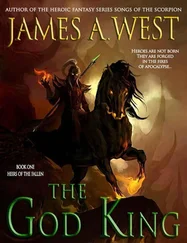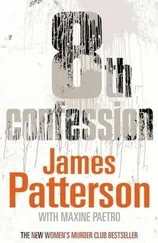He plucked a hair, then wiggled a tooth, trying to determine the mummy’s condition. Not surprisingly, it gave way in his hands.
Davis was dismayed but only for an instant. Not even waiting for Ayrton’s help, he struggled to lift the mummy into his arms and carried it out into the sunshine as if it were a small child.
He stood there, dazzled, as tourists stared at him in utter shock and amazement.
After confirming that the mummy was a woman, Davis made a judgment: based on the evidence, he was holding the remains of Queen Tiye. He was now convinced that the tomb was that of Tutankhamen. All he had to do was dig deeper, and he was certain he would find the pharaoh himself.
Standing in the center of the Valley of the Kings, cradling a thirty-three-hundred-year-old woman, Theodore Davis was triumphant and flushed with acumen and success.
He was also dead wrong about everything.
Luxor
1912
CARTER AND CARNARVON weren’t the only Egyptologists to publish a book that year.
Carter leafed through the pages of Theodore Davis’s The Tombs of Harmhabi and Touatankhamanou, and he was more convinced than ever that the elusive tomb of Tut was still out there somewhere in the valley.
Carter was “quite sure there were areas, covered by the dumps of previous excavators, which had not properly been examined.” Looking forward to the day when Davis would abandon his concession, and he and Carnarvon might return to the valley, Carter added: “I will state that we had definite hopes of finding one particular king, and that king was Tut.Ankh.Amen.”
In addition to finding Queen Tiye, Davis ’s workers had excavated an ancient trash heap. Inside they found eight large sealed pots bearing Tutankhamen’s name. As it turned out, the jars were filled with embalming supplies and leftovers from a long-ago feast, along with floral collars stitched with berries and flowers.
Very likely, this feast took place after Tut’s burial. The flowers were a sort that bloomed between March and April, offering a clue as to when this mysterious pharaoh had died.
Carter lit a cigarette and reread the descriptions of the tomb in which Davis purported to have found Tut. In his opinion, the gold-flaked and alabaster objects present inside that tomb were of too low a quality for a pharaoh’s burial chamber. Davis was a fool not to see as much himself.
More likely they had been placed there years later, when the tomb was reopened. Owing to the growing connection between Amarna and the tomb, it seemed plausible that Queen Tiye had been relocated from Amarna to the valley at some point after her death.
No, Tut hadn’t been found. But other discoveries in the valley-jars of embalming fluid, the faience cup, remnants of a final meal bearing inscriptions showing it had been part of Tut’s burial feast, seals bearing his symbol stamped on tomb doorways-clearly showed that he had existed.
“To explain the reasons for this belief of ours, we must turn to the published pages of Mr. Davis’s excavations,” Carter went on to write. “ Davis claimed that he had found the burial place of Tut.Ankh.Amen. The theory was quite untenabl… We had thus three distinct pieces of evidence: the faience cup found beneath the rock, the gold foil from the small pit tomb, and this important cache of funerary material. Which seemed definitely to connect Tut.Ankh.Amen with this particular part of the valley.”
Now all Carter needed was an opportunity to find it. “With all this evidence before us, we were thoroughly convinced in our own minds that the tomb of Tut.Ankh.Amen was still to be found, and that it ought to be situated not far from the center of the valley.”
But he needed Davis to abandon his concession.
Two years later, the American did just that.
Valley of the Kings
February 8, 1915
LORD CARNARVON SNATCHED UP Theodore Davis’s concession without hesitation. Just like that, after eight years of waiting, Carter was back in the valley. He finally began scouring the area for his long-hoped-for virgin tomb on February 8, 1915.
When Davis had walked away from his concession, saying that the valley was “exhausted,” few members of the Egyptology community disagreed. “We remembered, however, that a hundred years earlier Belzoni had made a similar claim and refused to be convinced. We had made a thorough excavation of the site and remained convinced that there were areas, covered by the dumps of previous excavators, which had never been properly examined,” wrote Carter.
Carter clung to the belief that Davis ’s evidence was incredibly slipshod and that he’d made assumptions about the discovered mummy’s identity that couldn’t be verified. “Clearly enough, we saw that very heavy work lay before us and that many thousands of tons of surface debris would have to be removed before we could find anything. But there was always a chance that a tomb might reward us in the end, and that was always a chance we were willing to take.”
So February 8, 1915, should have been a triumphant day for Carter, as what amounted to the pinnacle of his life’s work was about to begin.
There was just one problem: the world was at war.
All digging in the Valley of the Kings had been stopped. Even worse, orders arrived from the British army drafting Carter into service.
How dare the venal, tawdry modern world intrude on his search for an ancient king.
Egyptian Desert
1324 BC
THE BONFIRE LIT UP THE NIGHT, its crackling flames reflecting off the pale tents of Egypt ’s great army. Tut sat on his traveling throne, with sword-carrying sentries on either side. He was close enough to feel the fire’s warmth but distant enough that he was safe from any drunken soldier who might suddenly decide to settle a grudge with the pharaoh.
Tonight such a confrontation was unlikely. The men were beyond euphoric after slaughtering a hated enemy. Blood still flecked many of their faces; desert grime ringed their eyes.
Tut had drunk more wine than was prudent, but he didn’t feel it that much. As he strapped a cloak about his shoulders to stave off the cold night air, Tut sensed the men watching him. He detected a new respect. Their eyes said that today, on the field of battle, he had behaved as a true king.
Women also ringed the fire, some of them quite beautiful. Several were camp followers who had endured the long trek from Thebes. But many were captured enemy women-the prettiest ones-bound at the wrists after having been dragged from their homes. Their faces were masks of terror, shame, and loss. They had already seen their husbands and sons slain. Now, once the fire died, they would be passed from man to man-a fate that made many wish that they had died too. Soon, a few would get their wish and go to the afterworld.
Tut felt one of the women gazing at him. Across the fire sat a solitary maiden with the most beautiful hair. Someone’s daughter, thought Tut. She was his age, perhaps younger. Raven hair flowed down her back. Dark brown eyes. Full lips and a strong chin.
His stomach felt funny, a sensation that he at first blamed on the wine. But now he knew it was nerves, the same insecurity that had threatened to paralyze him before battle. Tut shrugged it off and turned away from the gorgeous girl who dared to stare at him. He forced himself to think of Ankhesenpaaten, who was pregnant with their second child. His queen, his lover, his friend since childhood.
But then Tut found himself staring at the female prisoner. The girl looked even more desirable than before, tossing the ringlets of her hair to better show her profile. If she would have to submit to an Egyptian, she clearly preferred to spend the night with a pharaoh.
Читать дальше












